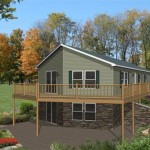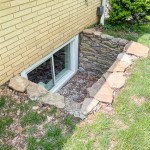Can A Crawl Space Be Turned Into A Basement?
Many homeowners have pondered the possibility of converting their crawl space into a functional basement. While this endeavor is feasible, it entails careful planning and consideration of several crucial aspects. Here's an in-depth exploration of the essential factors involved in transforming a crawl space into a subterranean living area:
Structural Integrity
Foremost, the structural integrity of the foundation and surrounding soil must be thoroughly assessed. Crawl spaces are often shallow and may not provide sufficient support for a basement. An engineer should inspect the foundation to determine if it can withstand the additional weight and ensure the integrity of the structure.
Height and Access
The height of the crawl space plays a vital role in determining its suitability for conversion. Basements typically require a minimum height of 7 feet to meet building codes and provide comfortable living space. If the crawl space falls short of this requirement, excavation may be necessary to increase the headroom.
Additionally, access to the crawl space should be considered. A bulkhead or staircase must be installed to provide safe and convenient entry and exit.
Moisture and Drainage
Crawl spaces are often prone to moisture and water intrusion. Before conversion, it's essential to address any moisture issues. This may involve installing a sump pump, waterproofing the walls, and ensuring proper drainage to prevent moisture buildup and potential structural damage.
Ventilation and Air Quality
Proper ventilation is crucial in preventing mold, mildew, and other indoor air quality issues. Installing a mechanical ventilation system or ensuring adequate natural ventilation is essential to maintain a healthy environment.
Insulation and Energy Efficiency
To make the converted basement energy efficient and comfortable, it should be adequately insulated. The walls, floor, and ceiling should be properly insulated to prevent heat loss and minimize energy consumption.
Egress and Safety
As with any habitable space, a converted basement should have at least one emergency egress point. This could be a window large enough for escape or a door leading to the outside. Additionally, smoke and carbon monoxide detectors should be installed for safety.
Purpose and Functionality
Before embarking on a crawl space conversion, it's important to consider the intended purpose of the basement. Whether it's for storage, recreation, or additional living space, the design and layout should align with its intended use. This will ensure that the converted basement meets the homeowner's needs.
Cost and Timeline
Converting a crawl space into a basement can be a significant undertaking, both in terms of cost and time. The complexity of the conversion, the size of the space, and the materials used will influence the overall cost and timeline. It's advisable to consult with contractors and obtain estimates before making any commitments.
In Conclusion
Transforming a crawl space into a basement is a feasible endeavor that can add significant value and functionality to a home. By carefully considering the essential aspects outlined above, homeowners can approach this project with confidence and create a comfortable, usable subterranean space.

Turning A Crawl Space Into Basement Read This First

How To Turn A Crawl Space Into Short Basement Studio Zerbey

Crawl Space To Basement Denver Conversion Finishing

How To Turn A Crawl Space Into Short Basement Studio Zerbey

Converting Crawl Space To Basement Good Or Bad Mellowpine

Increase The Living Space Of Your House Bisson Expert

Can You Convert A Crawl Space Into Basement

How To Change Your Crawlspace Into A Basement

Castle Builds Crawl Space Basement Conversion Dig Out Services Denver

Converting Your Crawl Space Into A Storage Area Quick Guide Bob Vila
See Also








